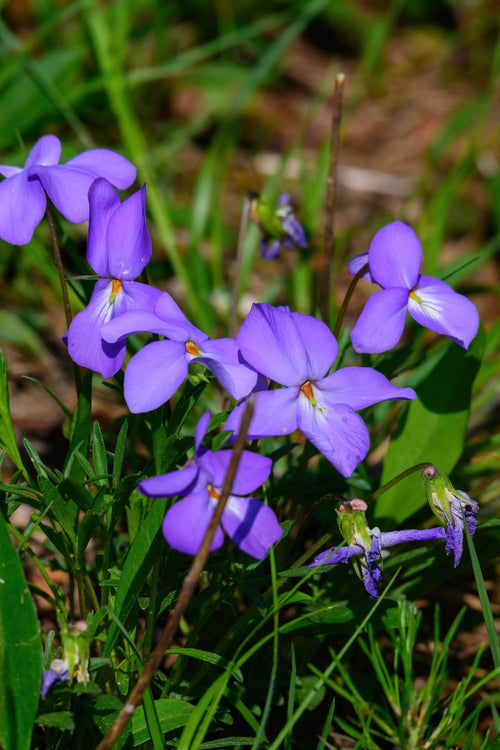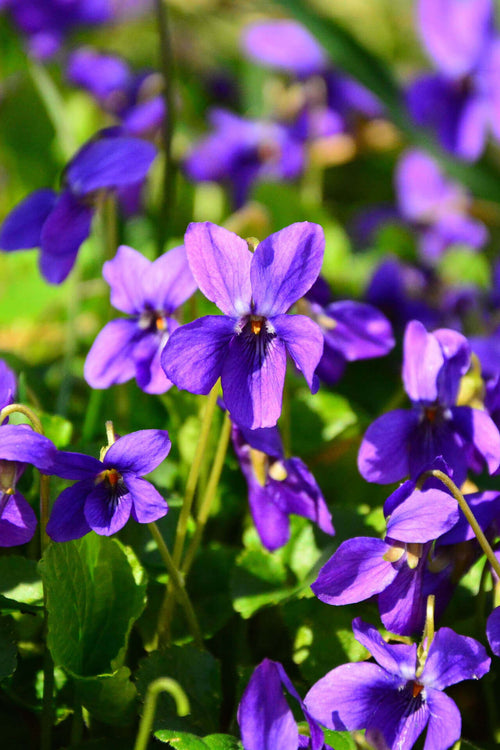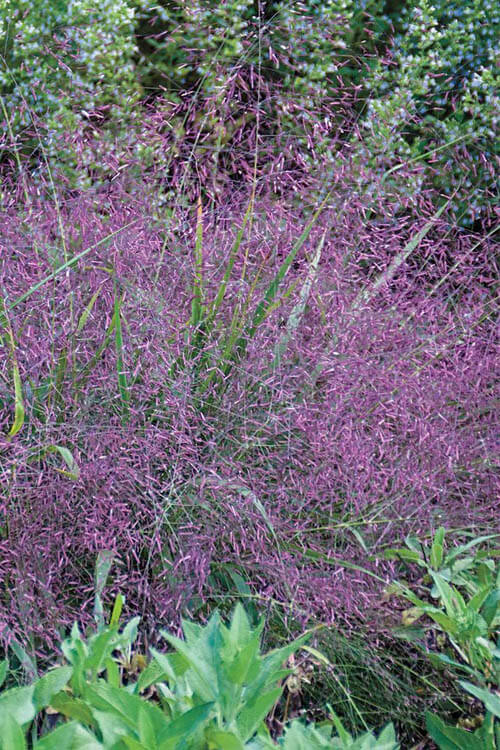Violets, with their delicate and enchanting blossoms, have captured the hearts of gardeners and nature enthusiasts for centuries. These charming flowers come in a wide array of varieties, each possessing unique characteristics and contributing to the world of horticulture in its unique way. In this article, we'll delve into the diverse types of violets, explore their myriad benefits, and discuss their significance in landscaping.
The World of Violets
Violets, scientifically known as Viola, belong to a large genus of flowering plants comprising over 500 species. These lovely perennials are native to various regions, from North America to Europe and Asia. Violets are versatile plants that thrive in multiple environments, making them a great addition to any garden or landscape.
Varieties of Violets
Common Blue Violet (Viola sororia): Also known as the wood violet or the purple violet, the familiar blue violet is widespread throughout North America. It features heart-shaped leaves and beautiful, deep purple-blue flowers with distinct yellow centers. This violet is often considered a lawn weed but is a cherished wildflower in naturalistic gardens.
African Violet (Saintpaulia ionantha): While not a true violet (Viola), African violets are beloved houseplants known for their colorful and velvety petals. They come in shades, from deep purples to pinks and whites, and are cherished for their long-lasting, dainty blooms.
Bird's Foot Violet (Viola pedata): Named for its unique leaves that resemble bird's feet, this violet species is native to North America. Its delicate lavender-blue flowers and finely divided foliage stand out in wildflower gardens and naturalized landscapes.
Dogtooth Violet (Erythronium dens-canis): Also known as the trout lily or fawn lily, this violet relative boasts distinctive mottled foliage and dainty, nodding lily-like flowers. Dogtooth violets are particularly sought after for woodland gardens.
Sweet Violet (Viola odorata): With fragrant, purple-blue or white flowers, sweet violets are celebrated for their delightful scent. They have been cultivated for centuries and are prized for their use in perfumes, culinary applications, and as ornamental plants.
Benefits of Violets
Violets offer a wide range of benefits that extend beyond their aesthetic appeal. Here are some of the notable advantages of incorporating violets into your landscape:
Attracting Pollinators: Violets are valuable for attracting pollinators like bees and butterflies. Their nectar-rich blooms provide a vital food source for these insects, promoting biodiversity in your garden.
Medicinal Uses: Some violet species, particularly Viola odorata, have been used in traditional herbal medicine for their anti-inflammatory properties. Violet leaves, and flowers can be made into teas, salves, or tinctures to treat various ailments.
Edible Delights: Sweet violets are not only visually appealing but also edible. Their flowers can be used to garnish salads, desserts, and drinks. Additionally, the leaves can be cooked and consumed as a leafy green, offering a mild, spinach-like flavor.
Natural Ground Covers: Many violet species, such as the common blue violet, serve as excellent ground covers. Their low-growing, spreading habit helps prevent soil erosion, suppress weeds, and create a lush carpet of green and violet in shaded areas.
Erosion Control: Violets have fibrous root systems that help stabilize soil and prevent erosion on slopes and hillsides. This makes them valuable additions to landscaping projects in areas prone to soil displacement.
Violets in Landscaping
Violets can play a significant role in various landscaping scenarios, from formal gardens to naturalistic wildflower meadows. Here are some ways to incorporate violets into your landscape:
Rock Gardens: Violets, with their low-growing habit and vibrant flowers, are ideal for rock gardens. They add color and visual interest to these specialized landscapes while providing ground cover to suppress weeds and conserve moisture.
Woodland Gardens: Shade-loving violets like the bird's foot violet and sweet violet thrive in woodland settings. Plant them beneath trees and alongside other native woodland species for a natural, harmonious appearance.
Wildflower Meadows: In naturalistic or wildflower meadows, native violets can contribute to biodiversity and provide sustenance for local pollinators. Allow them to naturalize and intermingle with other wildflowers for a picturesque and ecologically valuable landscape.
Container Gardens: African violets, though not true violets, are well-suited for container gardening. Their compact size and variety of flower colors make them popular choices for indoor and outdoor containers.
Ornamental Borders: Incorporate violets into your flower beds and borders for a pop of color and a touch of elegance. Mix them with other perennials and annuals to create visually appealing and diverse garden displays.
Erosion Control: If you have areas in your landscape prone to erosion, consider planting native violet species. Their fibrous root systems will help stabilize the soil, preventing decay while adding beauty to the landscape.
The Importance of Violets in Landscaping
Violets hold a special place in the world of landscaping for several reasons:
Biodiversity: Violets contribute to biodiversity by providing food and habitat for wildlife, especially pollinators. This, in turn, supports the overall health of the ecosystem.
Erosion Prevention: Their role in erosion control is crucial for maintaining the integrity of landscapes, preventing soil loss, and preserving the topsoil necessary for healthy plant growth.
Aesthetic Appeal: Violets offer a diverse range of colors and forms, making them versatile additions to any landscape design. Their ability to thrive in different settings ensures a violet species suitable for every garden style.
Low Maintenance: Many violet species require minimal care, making them attractive options for low-maintenance landscaping. Novice and experienced gardeners can successfully cultivate these plants with minimal intervention.
Cultural Significance: Violets have cultural and historical significance in various societies. They have been used in art, literature, and mythology, making them valuable additions for those who appreciate the storytelling aspect of landscaping.
In conclusion, violets, with their captivating beauty, diverse varieties, and numerous benefits, are essential to horticulture and landscaping. Whether you plant them in a formal garden, a wildflower meadow, or a container on your porch, violets will surely bring charm, ecological value, and a touch of natural elegance to your outdoor space. Embracing these enchanting flowers is not just a choice for aesthetics; it's a celebration of nature's versatility and the rich tapestry it weaves in our gardens and landscapes.




















































